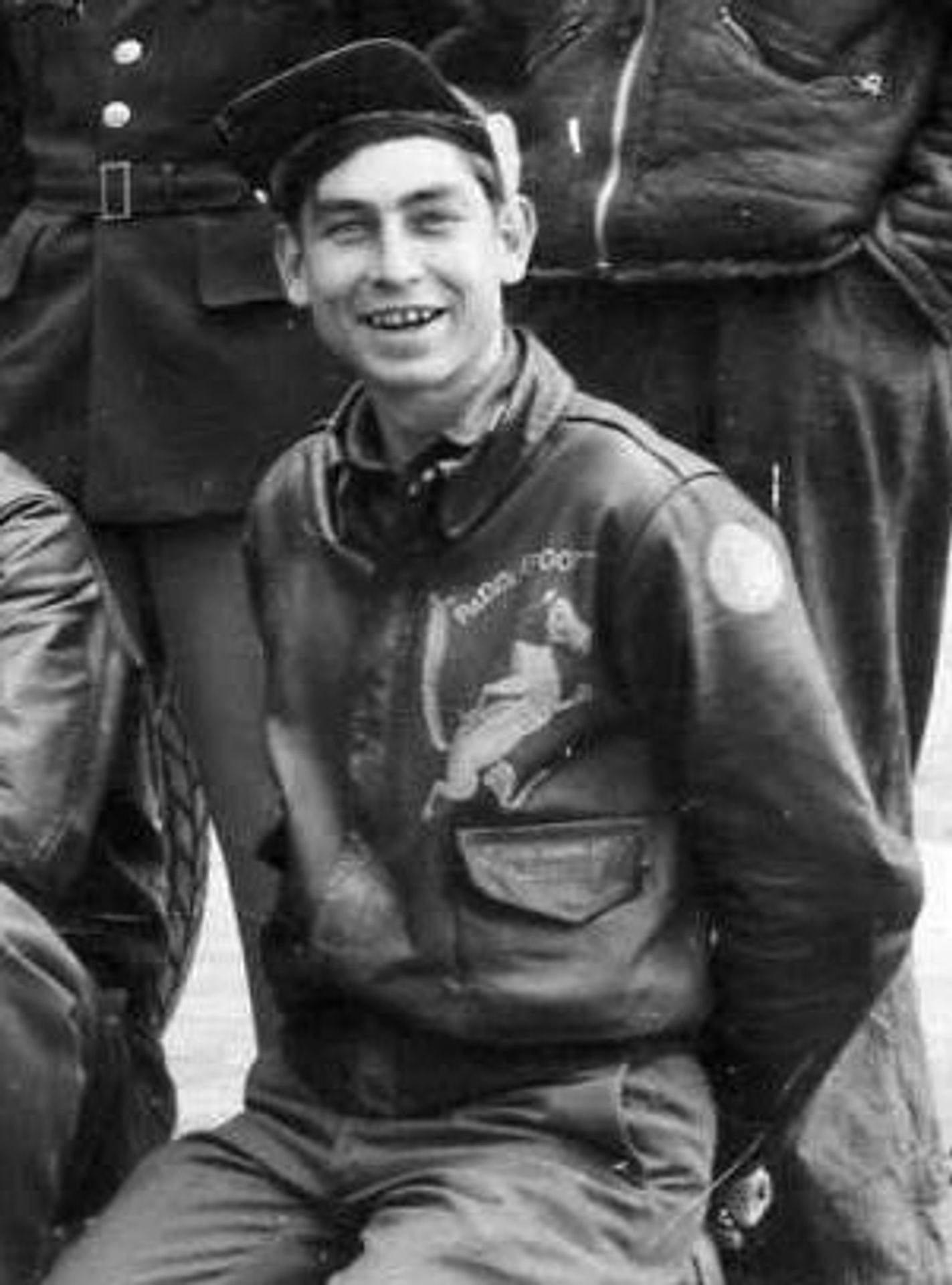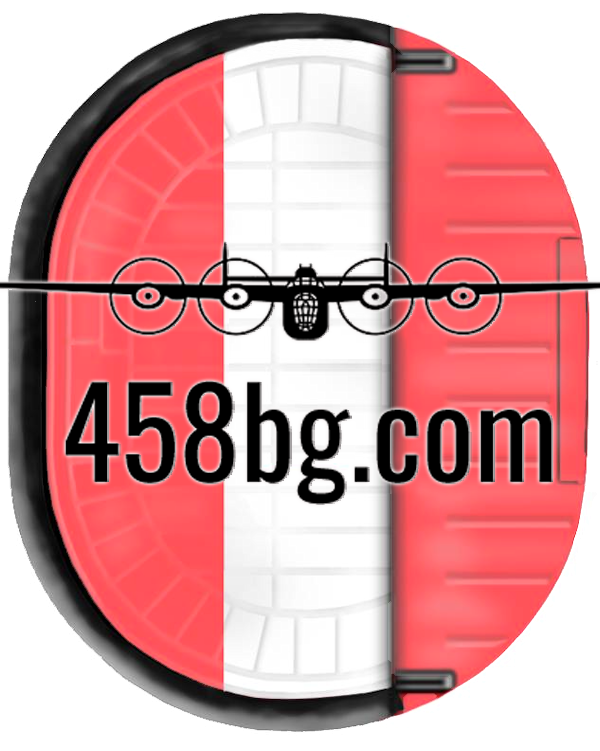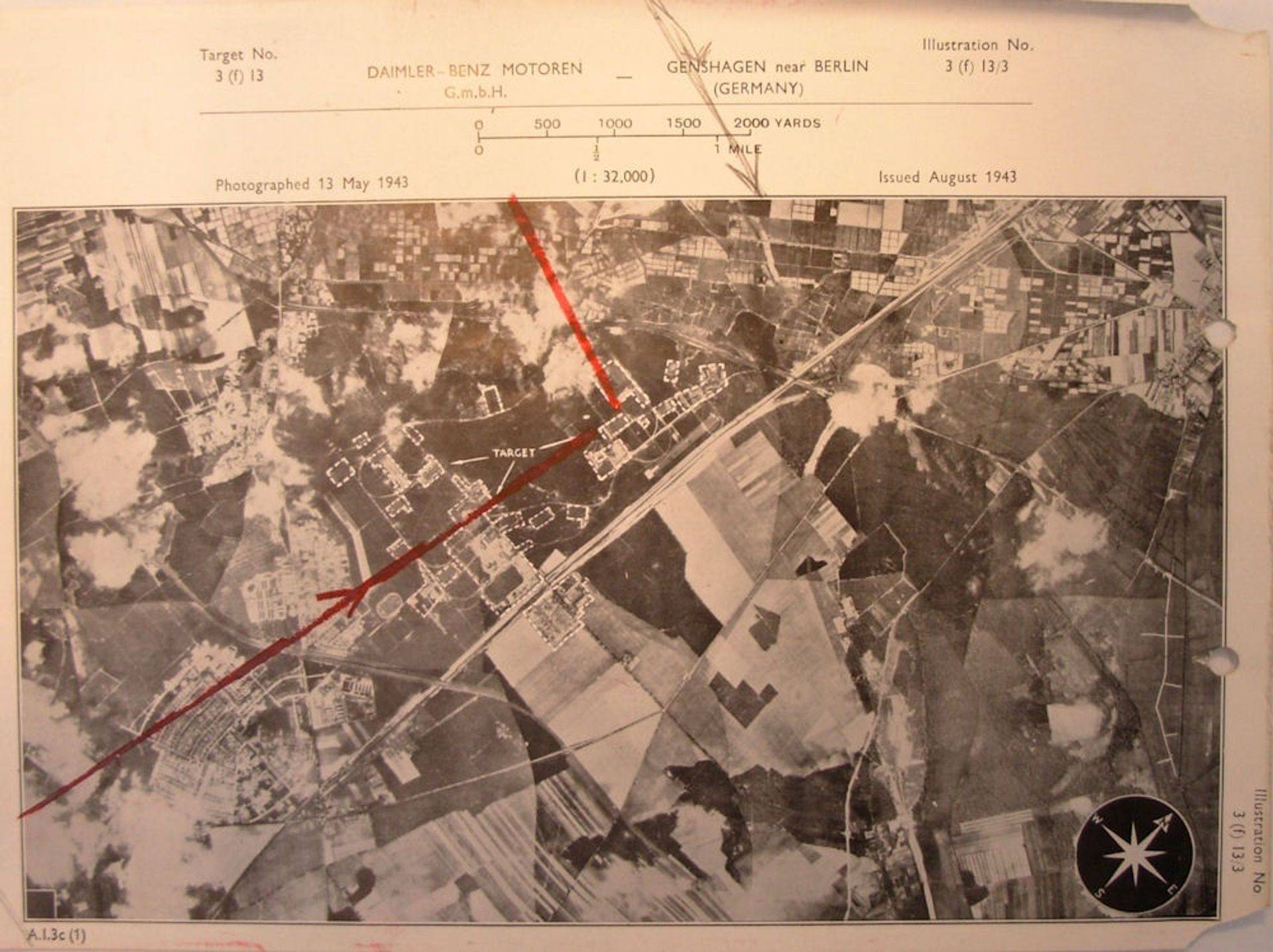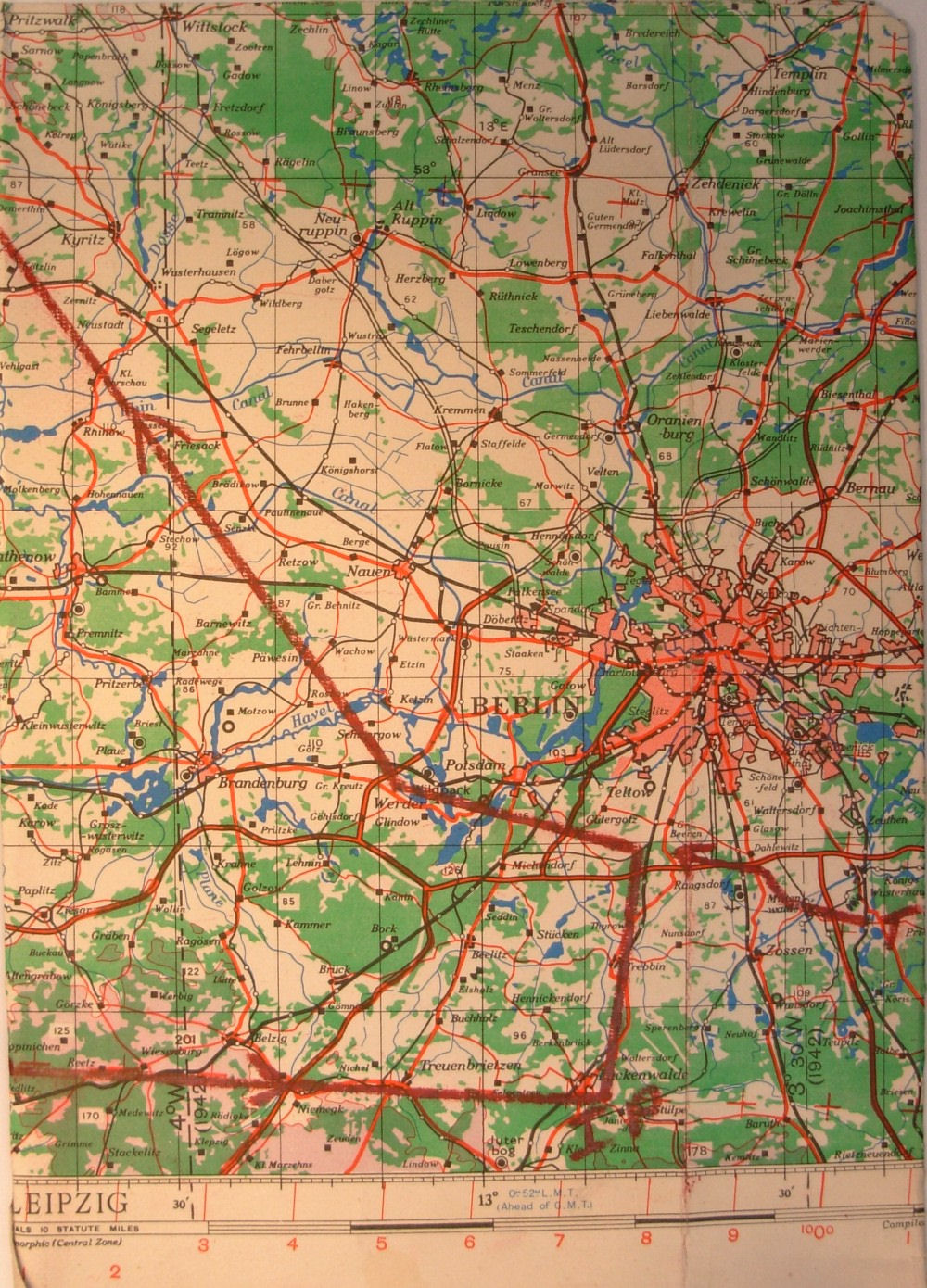458th Bombardment Group (H)
Mission 250
“Big-B”
It was our third mission and at briefing we were told our target city was Berlin, Germany, the capital city of the Third Reich. The date was 6 March 1944 and the Eighth Air Force was about to penetrate the heart of Germany for the first full scale daylight raid on Berlin. The 458th Bomb Group scheduled thirty-three B-24 bombers, thirteen of them aborted or failed to make the mission. The remaining twenty bombers joined up with the 14th to form a composite Wing of the 2nd [Bombardment] Division. The 2nd Bomb Wing would lead with the 14th and 96th [458th] composite [and the 20th Wing] to follow six miles behind them, bringing up the rear of the three Bomb Divisions of B-17s and B-24s to make a bomber stream of over ninety miles long.
The bomber force consisted of 242 B-24s and 567 B-17s. Originally our target was to be the Heinkel Aircraft Factory at Oranienburg, north of Berlin. It was feared that we would have to fly trough the heaviest flak over Berlin to reach our target, so they switched our target to Genshagen to hit the Daimler-Benz Motor Works. The bombers had to fly over 1,000 miles to the target and back.
Temperatures at altitude were near 60° below zero F. We were to stay below 21,000 feet to prevent contrail and make it harder for the German fighters to spot us. At Horsham St. Faith at take-off, visibility was below 1,800 feet and patches of fog, with completed cloud cover between 3,000 and 6,000 feet. This meant going up through the soup for assembly, forming at 10,000 feet.
About 10:30 we departed England and headed for the North Sea and across Holland. We picked up our first fighter escort, the 56th Fighter Group, somewhere over Holland. We were following the 3rd Division B-17s when they got off course between Enschede and Osnabruck. The B-24s and part of the B-17s saw the error and stayed on the planned route.
Our Bomb Group took a course southeast after passing between Brandenburg and Magdeburg to the IP, then swung North into the wind to the target. The worst flak hit us as we approached Oranienburg. There may have been kids firing those 88mm flak guns, but they were good. It was bad enough riding that flak road in and out of Berlin, but as we arrived at the IP [Initial Point to start bomb run] we were on a collision course with a B-17 Group on their bomb run. Our Group leader who was a Lt. Col.[Col Isbell, Group C.O., was leading this day] had to abort our bomb run, change course and close bomb bay doors and set up for another run. Again we were off our target and he turned us 360° over Berlin instead of away from it. That put us in constant flak for over thirty minutes. He wasn’t satisfied with our two other runs, he wanted to hit the rail station and yards, not just Big-B.
We were flying in the lower left three plane element in the position of “Purple Heart Corner”. The guy leading our element took us under the main Group formation. By now our bomb bay doors were open again and we were in a very precarious situation. We didn’t like looking up at those open, loaded bomb bays directly above us. Our pilot, 2nd Lt. Charles A. Melton decided to leave the element and slid back up in the formation where we belonged. Our element leader and the other wing man were two of five losses that day. We feared at the time that our own Group’s bombs fell on them.
It was on this third bomb run that our navigator, 2nd Lt. Charles C. Weinum stuck his head up in the navigator’s dome in front of the pilots and thumbed his nose at them. He noticed a dog fight and got down inside to get a better view through the side window. After he had left, a chunk of flak made a hole through the dome about the size of a fist. If his head had been there, Pow! no head. He stuck his head up there again, saw the flak hole and got the surprise of his life.
We had to divert to an alternate target. By then we had heavy cloud cover and ended up dropping our bombs near Potsdam. With the target no longer visible, we had to resort to PFF (Pathfinder Force) radar and the results were very poor.
Shortly after leaving the target area, we were attacked by two FW-190s without causing any damage. Our Group had been badly shot up by flak, one aircraft lost over the target. This was 2nd Lt. Guy Rogers’ crew on B-24 42-52515. It crashed west of Berlin, eight men killed, two [blown] out when the plane exploded. [The two men, pilot and co-pilot were captured] Three more of our badly shot up B-24s made it to Holland.
The next to go down was Captain Jack Bogusch [with Lt Lloyd Andrew crew] on 41-29286. Four men were killed and six survived the crash and were taken prisoner. Then 2nd Lt. Thayer Hopkins crew on 41-29299 crashed. All ten men survived; [four evaded capture, returning to England] and the rest were POWs. Next to crash was Crew #52 of 2nd Lt. Beverly Ballard on 42-52450. Three men were killed and six taken prisoner. The ball turret gunner, Sgt Victor W. Krueger evaded capture for 14 months when the Dutch Resistance found him and hid him out until the British troops rescued him in April 1945. 2nd Lt. Jesse McMains crew was shot down by an ME-110 and crashed near Ueltzen, Germany. Three were killed and seven taken prisoner.

As for our crew #67 [2Lt Charles A. Melton] on B-24 41-28719 Q Paddlefoot, [we] experienced a bit of flak damage, but no one on the crew was injured and our return to England was uneventful.
This was a very costly mission for the Eighth Air Force as well as for the 458th Bomb Group, which alone lost five bombers and three returned with minor battle damage – the most ever for one mission throughout the remainder of the war.
Of the 702 bombers and 832 fighters that reached enemy territory, 69 heavy bombers and crews were lost. Eleven of the 832 fighters were lost to enemy flak or fighters. Of the 69 bombers lost, 53 were B-17s and 16 were B-24s that failed to return. 701 men were lost in action of which 229 were killed or missing. 345 German civilians were killed or wounded and 36 German airmen were killed and 25 wounded, with a loss of 66 aircraft. Approximately one out of every ten bombers were lost on this mission, the greatest on any separate mission for the Eighth Air Force. We knew we had been on a big one. Yes, it was a big one – “BIG-B”.
Story by Glen R. Matson [left], 2nd Air Division Journal


